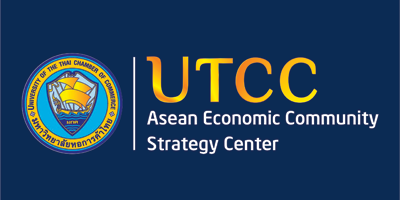How can Laos retain economic growth motivation in 2017
VIENTIANE (Xinhua) – The Lao government set its target of economic development in 2017 at seven per cent, one of the highest among regional countries. In an article titled “These Are The Fastest Growing Economies In East Asia In 2017” by Ralph Jennings released on the website of Forbes Magazine in late March, Laos was mentioned in the first place.
So, what is the momentum that drive the economic growth of Laos?
According to a report by World Bank, despite global economic uncertainty, Laos managed to record economic growth of seven per cent in 2016. However, Lao government has to work further on management of macro-economy, commodity price, promote investment and improve business environment, among others.
Forecast and judgement are unable to reflect the overall situation of a country and are only based on main aspects of an economy, while the state budget is basic financial plan of an economy and reflects the country’s national directions, policy and development situation, as well as maps out the government’s directions and activities.
Expenditure plan of Laos in 2017 is still based on moderate deficit to drive growth. At the same time, due to imbalance in revenue growth of high spending and low collecting, Laos has emphasised the policy of thrift and fight against extravagance and waste, and ensured the reduction of unnecessary spending in government bodies.
Laos has set a target to achieve fiscal revenue of 23.801 trillion Lao kip (some 2.89 billion US dollars) in 2017 with budget expenditures of 32.262 trillion Lao kip (some 3.917 billion US dollars). As a result, the Southeast Asian country is forecast to suffer from deficit of 8.464 trillion Lao kip (around 1.027 billion US dollars), equivalent to 6.52 per cent of Gross Domestic Product (GDP).
Laos is sparsely populated country with total land area of 237,000 square kilometres and a population of around seven million. On the one hand, Laos has relatively small market and small labour population which is unsuitable for development of processing industry; on the other hand, the per capita possession of natural resources is relatively high with abundance of mineral, hydropower and land resources.
According to statistics by World Bank, Laos’ GDP grew at an average rate of seven per cent over the past decade, with industries using natural resources (mainly water, minerals and forests) contributed one third of the growth.
In 2016, Laos’ GDP reached 13.76 billion US dollars, poverty rate accounted for about 23 per cent of the total population, and life expectancy of Lao people was 66 years. Lao economy significantly depended on natural resources, causing great suffering for the economy in the past while commodity price declined.
In recent years, Laos witnessed little fluctuation in national commodity prices while price of forestry and mineral products increased together with elimination of negative factors. At the same time, the strong development of energy industry has provided great support for the national economic development.
The World Bank assessed that the development of energy industry with the operation of a series of new power plants and acceleration of Asean integration shall open a bright prospect for Lao economic development while fiscal deficit, trade deficit and foreign debts shall gradually narrow.
In fact, the Forbes article also focuses on the above points when mentioning Laos’ economy, saying the economy will grow seven per cent this year because of investment in the power sector and deeper integration with the 10-member Association of Southeast Asian Nations.
The landlocked country of about seven million people is improving its power network to provide electricity to 10 per cent of households by 2020 and possibly export it as well.
Over the past years, the availability of Chinese factors in Laos has significantly increased, which means that the economic ties between the two countries are becoming increasingly close, and there have been a considerable contribution of Chinese momentum in the high development level of Laos in recent years.
For example in engineering contract, despite the fact that Laos is a small economy of over 10 billion US dollars, engineering contract value of Chinese contractors in Laos have amounted to 6.71 billion US dollars in 2016, an increase of 30.1 per cent over 2015, ranking third after Malaysia and Indonesia among Asean nations.
In terms of trade, according to Lao state-run media Vientiane Times on December 3, 2016, total bilateral trade between Laos and China would surpass two billion US dollars in the year. Statistics by the Department of Import and Export under the Lao Ministry of Industry and Commerce showed that in the first nine months of 2015-2016 fiscal year, Laos-China bilateral trade exceeded 1.5 billion US dollars, of which Laos exported some 950 million US dollars worth of goods to China and imported some 570 million US dollars worth of goods from the northern neighbour. China became the second biggest trade partner of Laos after Thailand.
Regarding investment, China is the biggest capital sources of Laos. As of May 2016, China invested over 6.7 billion US dollars in 760 projects in Laos, covering a wide range from energy and minerals industry to agricultural and service sector.
In addition, it is forecast that there will be not much changes in international economic and domestic socio-economic development situation in 2017 compared to the previous years, while there is no obvious negative factor but plenty of positive factors, especially the construction of China-Laos railway, together with the increase of investment in infrastructure industry. All these are undoubtedly good news for the Lao economy.
Source: http://borneobulletin.com.bn/can-laos-retain-economic-growth-motivation-2017/


 English
English




